On Your Feet
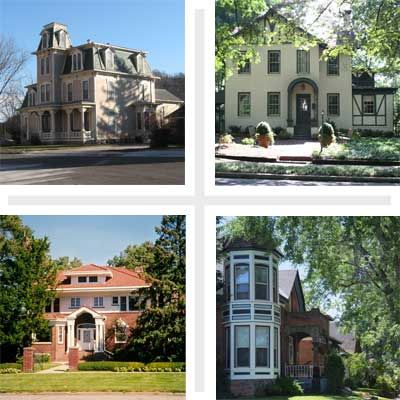
For those who prefer leaving the car in the driveway every once in a while, these places offer safe, pedestrian-friendly streets and amenities such as grocery stores and restaurants just a few blocks away. They’re just a few of the 61 vibrant neighborhoods from coast to coast where you’ll find one-of-a-kind period houses. Read on to see which ones are laid out in a mixed-use plan, or see all the neighborhoods and categories.
Cowls Street, Fairbanks, Alaska
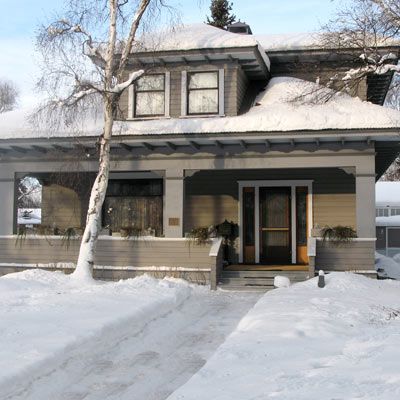
Set deep in the Alaskan wilderness (Anchorage is more than a 6-hour drive away), Fairbanks is an urban oasis offering such metropolitan diversions as art museums, opera houses, heck, even Thai food. But don’t be fooled. This is still Alaska. Winters last from late September through late April, and the city is surrounded by snow-capped mountains, raging rivers, and acres of caribou-filled forest. “This is wilderness beyond your comprehension,” says Deb Hickok, president and CEO of Fairbanks Convention and Visitors Bureau. While the greater Fairbanks area is home to almost 100,000 people, only about 35,000 live within the city limits (others dwell in surrounding areas). Many of those in town reside in the Cowls Street Neighborhood, which is filled with modest, well-crafted houses, some recently restored, others comfortably lived in.
The Houses
Most were built in the early 1900s, when Fairbanks went from a trading post for gold miners to an actual city, thanks to the railroad and, later, the oil and gas industries. The houses are a mix of Craftsman bungalows, foursquares, ranch-styles, and a few log cabins. Many are situated on small lots, but that doesn’t stop residents from cultivating vegetable gardens during the brief growing season. Prices hover around the $100,000 to $200,000 mark.
Why Buy Here?
Residents enjoy the same pleasures as the thousands of tourists who flock here each summer for hiking, hunting, fly-fishing, whitewater rafting, dog mushing, and a great view of the northern lights. For those seeking indoor alternatives, the University of Alaska Fairbanks provides lectures, classes, and sporting events.
Among the best for: The West, Cottages and Bungalows, Parks and Recreation, City Living, Walkability, College Towns, Lots to Do
Pine Crest Historic District, Prescott, Arizona
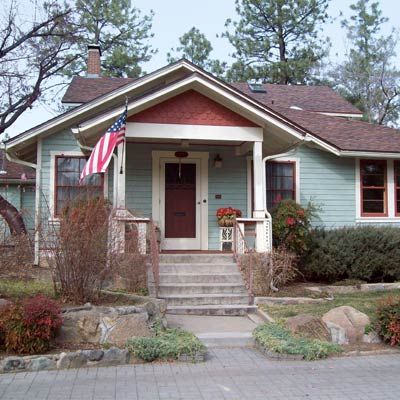
Thanks to its warm climate, clean air, and abundant sunshine, the former frontier town of Prescott, Arizona, became a popular destination for those suffering with tuberculosis and other maladies in the late 19th and early 20th century. Seeing this trend as a boon to the local economy, the Chamber of Commerce developed the west Prescott neighborhood of Pine Crest in 1911 to cater to these long-term temporary residents. The neighborhood was plotted to complement the area’s lush, hilly terrain, resulting in a natural setting for its dwellings.
The Houses
Craftsman-style bungalows, built between 1911 and 1935, abound on narrow, shady streets. Many houses retain their original shingled exteriors. A noteworthy feature of homes here is their stone retaining walls. Constructed of native rock, they blend beautifully with Pine Crest’s natural surroundings. House prices run between $90,000 and $200,000.
Why Buy Here?
In addition to a healthful environment, Prescott, which is about two hours from Phoenix and Flagstaff, today has a bustling downtown plaza that welcomes strolling among its art museums, boutiques, and galleries. Just outside of town is a sportsman’s paradise, with golfing, hiking, and biking in the Bradshaw Mountains and Prescott National Forest, and plenty of fishing, swimming, and kayaking in lakes surrounded by Arizona’s dramatic, bouldery terrain. While the year-round climate is mild, the town still gets crisp autumns and winter snow.
Among the best for: The West, Bargains, Walkability, Cottages and Bungalows, Parks and Recreation, Lots to Do, Retirees
The Quapaw Quarter, Little Rock, Arkansas
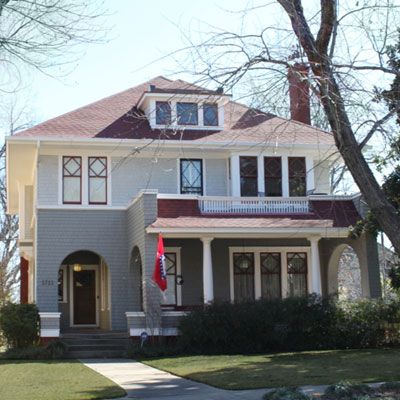
Named for the Native Americans who inhabited this place centuries ago, the 9-square-mile Quapaw Quarter incorporates all of downtown Little Rock, as well as several adjacent neighborhoods. Here, among the flowering pear trees and majestic Oaks, stand the city’s oldest, most elegant homes—including the Arkansas Governor’s Mansion, where Bill Clinton and Mike Huckabee hung their hats, and an 1881 Second Empire you might well recognize as the headquarters for Sugarbaker Designs in the sitcom Designing Women (recently renovated into an event space). Comprising 15 National Historic Districts, the Quarter also boasts dozens of southern-style restaurants, Irish pubs, the sprawling 36-acre MacArthur Park—the oldest municipal park in Little Rock—and the Clinton Presidential Library.
The Houses
The Quarter features an impressive selection of Queen Anne, Colonial Revival, American Foursquare, and Craftsman houses, some lovingly restored, others in dire need of some Tom Silva-like skills. Most were built between 1880 and 1930, when Little Rock experienced its most substantial building boom, and range in size from about 1,500 to 5,000 square feet. Prices run from $150,000, to $500,000.
Why Buy Here?
Anyone looking for a more laid-back lifestyle that includes more strolling than driving would be wise to check out the Quarter. There are also community gardens, farmer’s markets, museums, theaters, and hospitals, all within walking distance. Most restoration work in the National Historic Districts is eligible for state rehabilitation tax credits.
Among the best for: The South, Cottages and Bungalows, City Living, Walkability, Parks and Recreation, American Heritage, Family Friendly. Lots to Do, Retirees
Rose Park, Long Beach, California
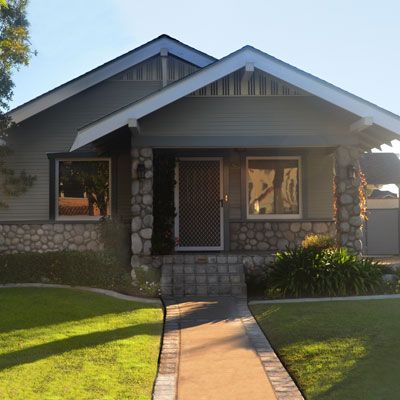
Situated around a small but beloved pocket park, this Long Beach community of about 22,000 is catching the hearts of artists, musicians, and young couples, some of whom migrate about 25 miles south from Los Angeles for its character-filled Craftsman bungalows and Spanish Revivals, as well as its proximity to the coast. The neighborhood developed in the early 20th century, when second-generation British and Scandinavian immigrants, who worked in commerce, the shipyards, and the oil fields, purchased individual lots to build modest, largely two-bedroom houses. Nowadays, it’s a hipper, expanded version of Mayberry, a place where locals gather in the park for picnics or yoga classes and where impromptu concerts might break out on porches on summer nights. Rose Park is also adjacent to Retro Row, a three-block commercial strip that’s home to pubs, shops, and a restored 1920s Art Deco movie house.
The Houses
The oldest are Victorian-era cottages, but the most ubiquitous are Craftsman bungalows, all the rage between 1910 and 1922, when the neighborhood saw its boom. Later styles include Spanish Revival and Mission Revival. The average price is around $350,000 to $450,000.
Why Buy Here?
The 2008 restoration of the neighborhood’s namesake park has given new life to this area, notably in an annual bluegrass festival that draws thousands. And if you’re a DIY novice, The Rose Park Neighborhood Association hosts an annual Restoration Trade Fair each summer, when dozens of craftspeople and contractors advise visitors and attendees on the best practices for restoring their old houses.
Among the best for: The West, City Living, First-Time Buyers, Fixer-Uppers, Walkability, Lots to Do, Cottages and Bungalows, Editors’ Picks
Arapahoe Acres, Englewood, Colorado
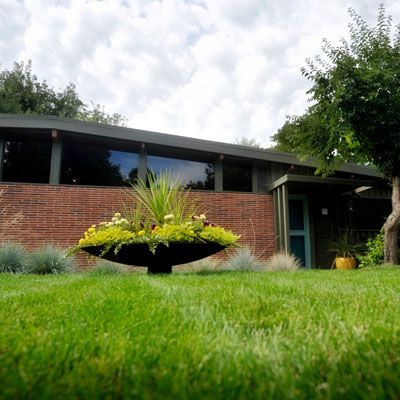
David Steers was surprised when his wife, Yvonne, came home from a long walk one day in 1999 and proclaimed she wanted to sell their Craftsman bungalow in Denver and move to Arapahoe Acres. But when he saw the 1955 mid-century modern she was talking about, he could see where she was coming from. “I had to admit, it was pretty cool,” says David, who is now the proud owner of that very house. Arapahoe Acres was the brainchild of mid-century builder and home designer Edward B. Hawkins. Inspired by Frank Lloyd Wright, Hawkins was determined to build a neighborhood of custom houses featuring modern design elements. In 1949, he purchased 30 acres of land in Englewood and embarked on his dream. The first houses were designed by architect Eugene Sternberg, an advocate of two- and three-bedroom plans that, while incorporating high design, remained affordable. But Hawkins sought a more affluent market, and he parted ways with Sternberg to begin designing the larger, more elaborate houses he preferred.
The Houses
The neighborhood consists of 124 dwellings constructed between 1949 and 1957. Most are one- or two-story houses, with some split-level ranches, too. Many of the designs were inspired by Frank Lloyd Wright’s Usonian style, with open floor plans, low-pitched roofs, and ample use of stone, wood, and brick, as well as wide banks of windows, and built-ins like desks and even sofas. Prices range from about $270,000 to $525,000.
Why Buy Here?
In 1998, the neighborhood became the first-ever post–World War II development to be placed on the National Register of Historic Places. The fact that it’s a 20-minute drive to downtown Denver and has good public schools sweetens the pot.
Among the best for: The West, Easy Commute, Family Friendly, Walkability, American Heritage
The Triangle, Wilmington, Delaware
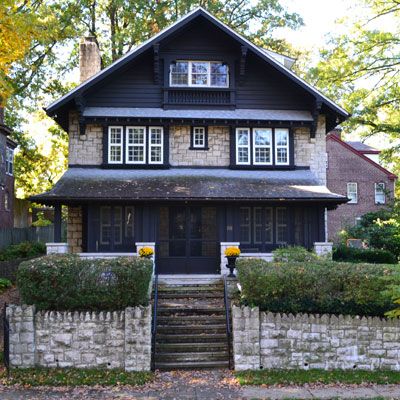
Sure, it’s located in the biggest city in Delaware. But what makes the Triangle neighborhood, named for its triangulated borders, so appealing is its tranquil suburban feel. “The residents sit on front porches, walk dogs, throw block parties, and look out for each other,” says local Realtor Judith Kolodgie. Neighbors also appreciate the Triangle’s proximity to bordering Brandywine Park, hiking and biking trails, and a stadium that hosts high-school football games. A nice walk down Baynard Boulevard will get you to downtown Wilmington’s shops, restaurants, and the recently refurbished Queen Theatre, a stunning 1915 movie house that now offers live performances.
The Houses
Formed in the early 1900s as a streetcar suburb, the neighborhood includes beefy freestanding houses, many with enormous front porches, as well as semi-detached houses. Styles include Queen Anne, Shingle, Dutch Colonial, and Colonial Revival. Both single and two-family houses are available from $200,000 to $450,000.
Why Buy Here?
There is a strong community feeling among the residents, who together arrange events such as an annual yard sale and a Halloween parade. The Triangle has long been known as “the Sallies neighborhood,” because it’s home to the Salesianum School, a large Catholic boys’ school educating students since 1903. “The Triangle is quiet and friendly and has been a good place to raise kids,” says Judith Kolodgie, a homeowner here for 28 years. Need we say more?
Among the best for: The Northeast, Family Friendly, Cottages and Bungalows, City Living, Lots to Do, Parks and Recreation, Walkability
Avondale Estates, Georgia
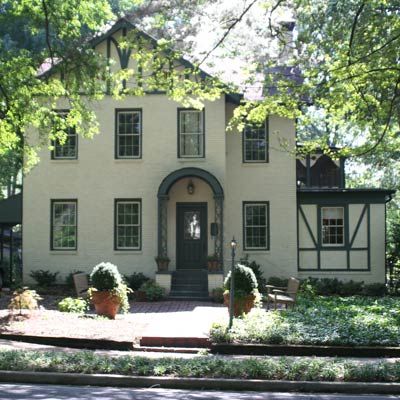
From the Tudor Revival commercial buildings downtown to its stone pathways and tennis club, Avondale Estates has the unmistakable feel of a storied English village. And that’s no accident. After visiting Shakespeare’s birthplace of Stratford-upon-Avon in the 1920s, founder George Francis Willis commissioned internationally known city planners, civic engineers, and landscape architects, including Philadelphia landscape architect Robert Cridland, to turn what was once a small farming community into a Peach State version of the Bard’s hometown. Nowadays, this small city of about 3,000 draws new residents with its lush, undulating landscapes, pocket parks, and its centerpiece, Lake Avondale, which offers fishing and an enduring sense of tranquility.
The Houses
The English Tudor style predominates among the assortment of English Cottage, Dutch Colonial, Colonial Revival, and Craftsman homes. Most are from the 1920s, though there are several ranch-style houses that were built beginning in the 1950s. Look for thoughtfully crafted details including elaborate brick or stone work, decorative brackets, or red tile roofs. Fixer-uppers start at $120,000, while thoughtfully updated larger houses run from $200,000 to $500,000 to a high of $700,000.
Why Buy Here?
Despite its quaint village atmosphere, Avondale Estates is just a few minutes from downtown Atlanta, by car and two rapid-transit stations. The city’s own downtown area is a quick walk and features many restaurants, pubs, and specialty shops owned by residents. Two high-performing charter schools draw families, and the spacious backyards and pocket parks appeal to kids and parents alike.
Among the best for: The South, Easy Commute, Fixer-Uppers, Small Towns, Family Friendly, Parks and Recreation, Walkability
Beverly, Chicago, Illinois
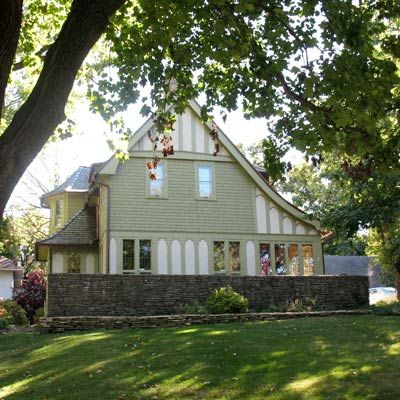
Not long ago, the Chicago Sun-Times called this hilly South Side Chicago neighborhood “Boomerang Beverly,” referencing the number of kids who move away, try another place on for size, then move back to raise their own kids. It’s easy to understand why. A neighborhood with safe streets, terrific schools, and seven Metra stations that’ll transport you downtown in 30 minutes is nothing to sneeze at. “This is definitely the kind of place where people come to settle down and start a family,” says Grace Kuikman, who’s lived in a Chicago Bungalow here since 1979. Beverly is also a diverse community, though it leans strongly Irish-American, with its many Guinness-pouring pubs, a replica of an Irish castle, and an Irish film festival that runs each year at the Beverly Arts Center, a neighborhood centerpiece that also offers concerts, classes, and lectures.
The Houses
They range from $125,000 bungalows and brick Tudors to million-dollar mansions, many of which are located in the Ridge Historic District, so named for the glacially formed elevation on which some of its homes were built. Other styles include Victorian-era Italianate and Stick, as well as Prairie-style houses designed by Chicago’s own Frank Lloyd Wright.
Why Buy Here?
Unlike most urban neighborhoods, Beverly boasts big yards, huge trees, and wide avenues. It recently received a new fire station and public library. Property values remain steady here, so it’s a good bet to invest in this small village right inside the big city.
Among the best for: The Midwest, Family Friendly, Easy Commute, Walkability, Lots to Do, City Living, Cottages and Bungalows, Victorians
West Washington, South Bend, Indiana
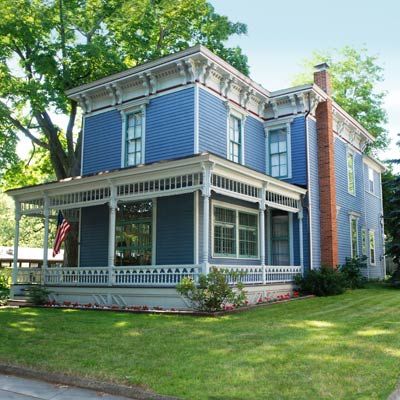
Some of our favorite old-house neighborhoods are found in the Hoosier State. And the West Washington neighborhood of South Bend is no exception. Here you’ll find solid, beautifully crafted homes set along tranquil sidewalks that’ll get you to downtown South Bend’s restaurants, museums, and shops in no time flat. West Washington was once the city’s most affluent neighborhood, a place where the founders of companies such as Studebaker and Oliver Chilled Plow built lavish mansions. Those mansions still stand, but these days, the neighborhood is affordable to Midwesterners of more modest means and is home to professors from the nearby University of Notre Dame, as well as doctors and young professionals.
The Houses
West Washington has been on the National Register of Historic Places since 1975. Local and nationally recognized architects, including John Mills Van Osdel and, in one case, Frank Lloyd Wright, designed the buildings and houses here. Styles include Federal, Queen Anne, Greek Revival, and Richardsonian Romanesque. Fixer-uppers can be found for as low as $70,000, but a restored 6,460-square-foot, 7-bedroom Queen Anne mansion was recently on the market for $595,000. The average price for a home runs around $250,000.
Why Buy Here?
While the 1970s ushered in a period of decline, for many years, the neighborhood’s close proximity to downtown and Notre Dame has led many old-house lovers to restore its decadent dwellings, turning houses formerly carved into apartments back into single-family homes.
Among the best for: The Midwest, Family Friendly, Walkability, Bargains, Fixer-Uppers, College Towns
Lansing, Iowa
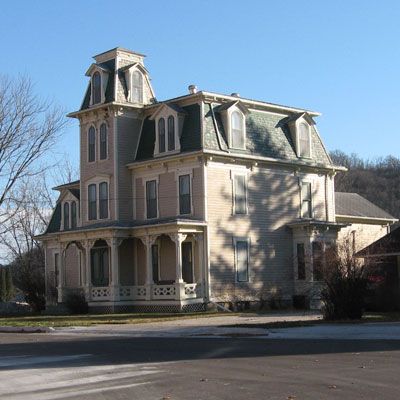
Settled in 1848 by Lansing, Michigan, native William Garrison, Lansing, Iowa, was once a prosperous town that flourished during the golden age of riverboat travel and was home to many a grain and lumber mill. Located on a series of bluffs on the Mississippi River, Lansing is now a popular stop-off point for recreational boaters, who hit the shore to enjoy the restaurants and bars on Main Street. Lansing also retains enough businesses to keep its thousand or so residents happy, including two hardware stores, a doctor’s office, grocery store, and Horsfall’s variety store, a ramshackle general-store throwback that stocks everything from undergarments to circa-1980s lunch boxes to, well, just about everything else.
The Houses
Older houses are located off Main Street and along the river on Front Street. Styles include Tudor Revival, Greek Revival, Mission, and Queen Anne. Prices range from below $200,000 to not much more than $400,000 for those with commanding views of the Mississippi River.
Why Buy Here?
Lansing is a popular destination for families, who appreciate its highly ranked public schools, and for second-home buyers and retirees, who like that everything they need is within walking distance. In addition to fishing and hunting, both wildly popular here, outdoor enthusiasts will love the surrounding parks’ hiking and biking opportunities, as well as Mt. Hosmer, a 450-foot-high bluff that overlooks Lansing and distant views of Iowa, Minnesota, and Wisconsin.
Among the best for: The Midwest, Waterfront, Retirees, Family Friendly, Parks and Recreation, Small Towns, Victorians, Walkability, Lots to Do
East Row Historic District, Newport, Kentucky
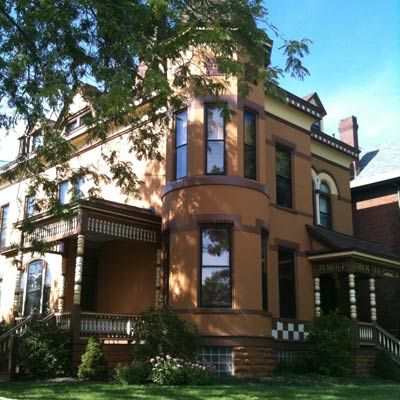
Across the Ohio River from downtown Cincinnati, the East Row Historic District was once home to late-19th-century riverboat captains and captains of industry, including brewers and bankers. When river-based industries declined, Newport took an alternative approach to diversifying its economy, as casinos, saloons, and houses of ill repute turned this into the Boardwalk Empire of the South. The 1980s saw an influx of architects, doctors, and young professionals restoring East Row residences that, despite being divided into apartments or boarding houses, retained many of their original details. These days, the neighborhood continues to draw Cincinnatians and fans throughout the region who appreciate its river-town beauty, entertainment district, and the beloved Newport Aquarium.
The Houses
Many of East Row’s 1,100 houses were built by 19th- and early-20th-century German craftsmen who came to work in the breweries and trades of this region. Houses feature ornate metal cornices, stone windowsills, stained-glass windows, and the occasional turret. Since they were erected primarily in the Victorian era, Queen Anne, Second Empire, and Italianate styles predominate. While some homes are priced above the $300,000 mark, you can still get a more modest dwelling or fixer-upper for just over $100,000.
Why Buy Here?
Newport’s entertainment district provides plenty of places to eat, hear music, or grab a drink. Cincinnati is easy to get to, thanks to a recently restored pedestrian bridge that allows you to walk or bike downtown for work, dining, or a Reds game.
Among the best for: The South, Bargains, Fixer-Uppers, Lots to Do, Easy Commute, Walkability, Waterfront, Victorians
Original Northwood, Baltimore, Maryland
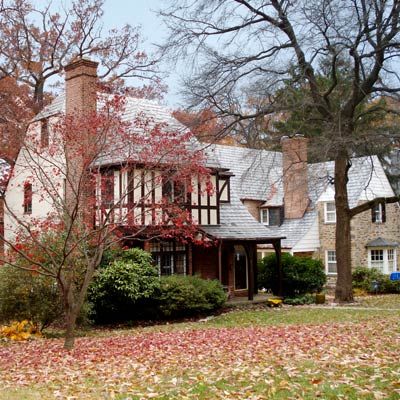
Once part of an 18th-century wooded estate, this North Baltimore neighborhood has never turned its back on nature. Developed in the 1930s as a planned community, its nearly 400 houses were built and sited to look as integral to this landscape as the centuries-old oak trees that surround them. Original Northwood (so named to distinguish it from newer developments in the nearby town of Northwood) was designed by the Roland Park Development Company, an affiliate of the Olmsted Brothers Landscape Architects, which came up with the plans for New York City’s Central Park. The neighborhood adheres to the Olmstedian principles of following the contours of the land, retaining mature trees, and situating each house according to the characteristics of the lot. Because garages are detached and located in rear alleyways, there are no driveways, so front lawns run contiguously, broken only by walkways and the many ornamental specimen trees.
The Houses
The neighborhood is inspired by the English countryside, with most houses built in the English Colonial and English Tudor style. There are also duplexes and Tudor-style rowhouses. Most were erected between 1929 and 1937 and range in price from $175,000 to a high of $500,000. The neighborhood is listed on the National Register of Historic Places.
Why Buy Here?
Original Northwood is located 15 minutes from downtown Baltimore and about an hour from Washington, D.C., which is accessible by train. House prices here have dropped from their peak in 2007–2008, so now’s the time to buy.
Among the best for: The Northeast, Easy Commute, City Living, Gardening, Walkability
Boulevards Historic District, Lincoln, Nebraska
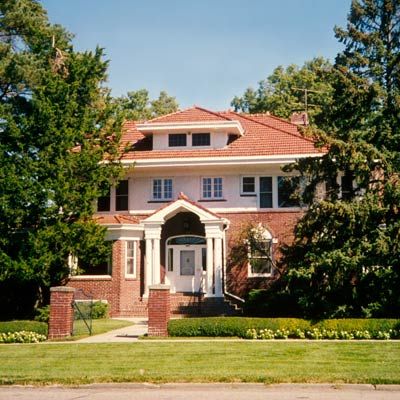
The Boulevards Historic District was the vision of brothers Frank, Mark, and George Woods, who developed 450 acres of land into a first-tier suburb in the early to mid 1900s. The brothers, who had made quite a bit of money in various endeavors, including selling tractors and starting a local phone company, constructed lavish, high-style houses of brick and stone along what is now Sheridan Boulevard for the town’s most affluent residents. The Woods brothers also worked with various landscape architects to design meandering side streets lined with cottages and bungalows. Those streets eschewed the predictable grid system, hugging the natural landscapes into which they were set. The Boulevards encompasses about 1,250 houses and remains a much-sought-after location for today’s upper- and middle-class families in this city of 250,000-plus residents.
The Houses
Those on Sheridan Boulevard, which remains the District’s most prestigious address, are set far back from the street and include high-style examples of Tudor Revival, Greek Revival, and Colonial Revival houses. On the neighborhood’s winding and woodsy outskirts you’ll find more modest houses in the Craftsman, Cape Cod, and Mission Revival styles. Prices range from $160,000 for smaller houses to around $650,000.
Why Buy Here?
Unlike many first-tier suburbs, the Boulevards avoided periods of decline, with very few teardowns and mostly tasteful renovations. The neighborhood was recently placed on the National Register of Historic Places, giving residents an even greater sense of pride. Downtown Lincoln, home to the University of Nebraska, is just a few miles away.
Among the best for: The Midwest, Easy Commute, Family Friendly, Cottages and Bungalows, Walkability, College Towns, American Heritage, Lots to Do
Keene, New Hampshire
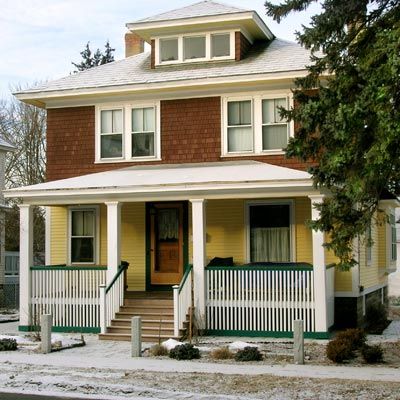
If you ask a local of Keene if she’s lived there all her life, the response is likely to be, “Not yet.” A dry sense of humor is typical of this part of southern New Hampshire, as is the knowledge that residents have found a good place to be. “It’s a 10-minute walk to Main Street, the movie theater, a huge park—everything you need,” says Sandy Hamm, who moved into her 1875 home on the east side of town eight years ago. The business center of Cheshire County, Keene’s population of around 22,000 swells to more than twice that size during the day. Students attending Keene State College and Antioch University New England also add several thousand to the local population during the school year, keeping things lively.
The Houses
In the late 19th and early 20th century, the town, with its woodenware mills and ample nearby forests, was a manufacturing center for items such as chairs, shutters, doors, carriages, and sleighs. Classic New England farmhouses, brick Cape Cods, and Victorian-era mansions with carriage houses, the latter survivors of Keene’s rich milltown days, are all found here. A 3,100-square-foot Italianate house with original moldings and built-ins (and requiring some major TLC) was recently listed at $145,000, while an 1850s farmhouse with hardwood floors and a tin ceiling was selling for around $75,000.
Why Buy Here?
Great schools, plentiful nearby nature (3,165-foot-high Mt. Monadock is 20 minutes away), and a close-knit community spiced with the energy of a college town means that for those looking for a lively pace, Keene has everything you need.
Among the best for: The Northeast, Family Friendly, College Towns, Walkability, Victorians, Fixer-Uppers, Parks and Recreation, Lots to Do
Downtown Historic District, Roswell, New Mexico

Yes, everyone knows about the famous “incident” that supposedly occurred here in 1947. But UFO crashes aside, this southwestern New Mexico city of about 50,000 attracts more than just conspiracy theorists, including young professionals and retirees who come here for the clean air, great weather, and a chance to acquire one of the 280 period houses in the city’s 40-block Downtown Historic District. The origins of Roswell go back to the 1870s, when a post office and a general store were built by Omaha business partners Van C. Smith and Aaron Wilbur. The town boomed in the 1890s with the arrival of the railroad and the founding, in 1891, of what’s now the prestigious New Mexico Military Institute. Growth continued when Roswell became home to what would become Walker Air Force Base, which was located here from the 1940s through the late 1960s.
The Houses
The Historic District, which was named to the National Register in 1985, contains houses built in more than 22 architectural styles, including California Mission, Prairie, Spanish Pueblo Revival, and Southwestern Vernacular. The oldest date back to the city’s building boom, which began in 1885; most houses were constructed between 1900 and 1935. Prices range from $85,000 to $375,000. A 1915 fixer-upper was recently on the market for $180,000.
Why Buy Here?
The International UFO Museum & Research Center is located here. For those whose interests are more terrestrial, the city is just a few miles from Bitter Lake National Wildlife Refuge, established in 1937 as a habitat for migratory birds, and Bottomless Lakes State Park, which offers plenty of hiking and biking, as well as kayaking on the Pecos River.
Among the best for: The West, Walkability, Lots to Do, Parks and Recreation, First-Time Buyers, Retirees, American Heritage
Ridgewood, Queens, New York

In high-priced cities like New York, savvy would-be buyers often seek out houses with a rental unit (or two) to help them foot the bill. These days, the savviest ones are turning their sights to Ridgewood, Queens, a 2-square-mile haven for two, three, and even four-family townhouses, located just east of the Brooklyn border. The traditionally working-class neighborhood was originally settled by the Dutch as a farming community, though most of its housing and commercial buildings were developed by early-20th-century German immigrants, who worked in the area’s breweries and factories. Ridgewood is home to an enormous National Historic District encompassing some 2,980 houses and apartment buildings. Though the atmosphere is relaxed, it’s not provincial. You can still get a perfect pirogie at a Polish deli, a top-notch chicken pad thai, or even an actual Manhattan at one of many restaurants, cafes, and bars here.
The Houses
The most prevalent housing style in the area is Romanesque Revival, seen in the bow-fronted, yellow-brick two- or three-family rowhouses built in the early 20th century by and for German immigrants employed at the city’s breweries. A two-family house runs between $500,000 and $650,000, while a three-family will cost $550,000 to $750,000 and a four-family about $800,000.
Why Buy Here?
As prices soar in nearby Brooklyn neighborhoods, like Williamsburg and Greenpoint, houses in this safe, established neighborhood feel like a relative bargain. Ridgewood is served by two subway lines, which run to midtown Manhattan in 30 minutes or less.
Among the best for: The Northeast, City Living, Easy Commute, American Heritage, Walkability, Editors’ Picks
The North Side Builder’s Residential District, Fargo, North Dakota
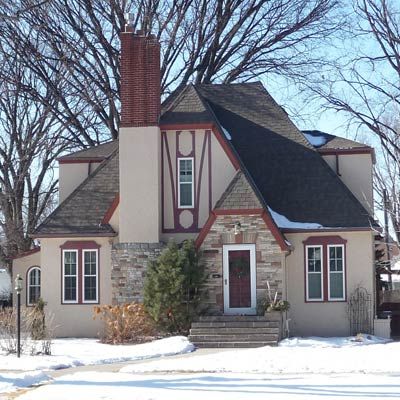
This neighborhood, just eight blocks north of downtown Fargo, is far more beautiful than its technical-sounding moniker would suggest. The North Side Builder’s Residential District—so named because all of its houses’ plans come from popular 20th-century builder’s pattern books—is known for its predominance of Tudor-style dwellings. Constructed during the late 1920 and 1930s for the city’s middle- to upper-middle-class residents, including salesmen, lawyers, and small-business owners, it’s still a popular choice for those who enjoy its easy-on-the-eyes architecture. “And since it’s a few blocks from the University of North Dakota campus, it’s also popular with professors and other university employees,” says Dawn Mayo, of Fargo’s planning and preservation office.
The Houses
While most are early-20th-century Tudor Revival, with steeply pitched gables and half timbers set in plaster, there are numerous Colonial Revivals and American Foursquares. Prices are affordable, often running between $100,000 and $200,000.
Why Buy Here?
State Farm Insurance named Fargo the third-safest city in the country last year. That, coupled with its well-regarded public school system, makes it great for raising a family. Residents of the NSBRD are a quick walk from downtown Fargo, which, thanks to tax incentives for building renovations and matching grants for building facade improvements, has undergone a renaissance in the past decade. North Dakota State’s relocation of its architecture and business schools downtown a few years ago has also given those businesses a boost. Fargo has a low unemployment rate—3.1 percent—and offers job opportunities in many different sectors, including software technology, manufacturing, health care, and higher education.
Among the best for: The Midwest, Bargains, College Towns, City Living, Lots to Do, Retirees, First-Time Buyers, Family Friendly, Walkability
Baker City, Oregon
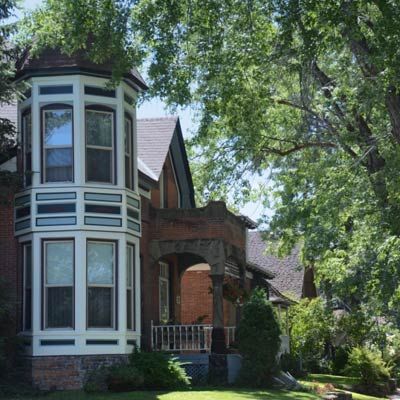
After gold was discovered here in the 1860s, this town nestled between the Wallowa and Blue mountains quickly grew into a cultural oasis with hotels, opera houses, and saloons. By the turn of the century, Baker City was known as the “Queen City of the Inland Empire,” its population of 6,700 rivaling that of Spokane and Boise. After the closing of a local sawmill led to an economic downturn in the 1980s, it managed to lure a new generation of artists and lone wolves with its surplus of affordable houses and large commercial spaces. Today, the town of 10,000 has a downtown that’s home to more than 140 independently owned businesses, including art galleries, a food co-op, and restaurants.
The Houses
Most were built between the 1890s and 1920s by miners and business owners who made their fortunes here during the gold rush. These are well-crafted houses, with plank wall construction and, in many cases, tuff stone cladding and foundations. Styles include vernacular cottages, Queen Annes, Italianates, American Foursquares, and Gothic Revivals. Modest houses can be had for less than $100,000, with a median price under $200,000.
Why Buy Here?
With its gorgeous surroundings and growing artistic community, locals believe Baker City is poised to become the Santa Fe of the northwest. Surrounded by mountain ranges, parks, and hiking trails, it also appeals to skiers and snowshoers. Anyone who’s dreamed of opening a business can nab a two-story commercial building downtown for around $200,000. But at the rate things are going, those bargains won’t last long.
Among the best for: The West, Parks and Recreation, Walkability, Lots to Do, Bargains, Fixer-Uppers, Victorians, Cottages and Bungalows
West Chester, Pennsylvania
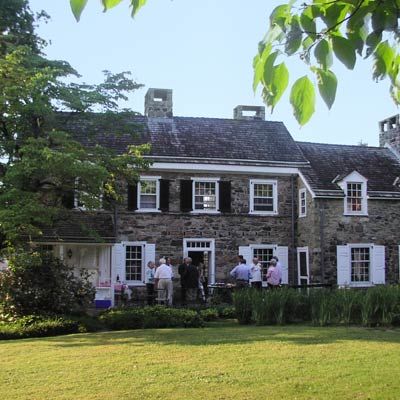
At just 1.8 square miles, West Chester hasn’t grown an inch since Welsh Quakers established it, in 1799. Back then, the town was located at an intersection of roads leading to Philadelphia, Pottstown, Lancaster, and Wilmington, Delaware. This made it a popular resting spot for travelers, hence the many hotels, taverns, and shops here. In 1848, West Chester, by then the county seat of Chester County, saw the completion of a Greek Revival courthouse designed by Thomas U. Walter, who went on to design the dome and wings of the U.S. Capitol Building. Today, downtown is packed with 19th-century buildings housing clothing boutiques, art galleries, and restaurants, which serve this bustling community of 18,000.
The Houses
Both rowhouses and free-standing houses in the Queen Anne, Second Empire, and Italianate style predominate, though a few early colonials remain. Most are built of stone or brick during a turn-of-the-century building boom, the result of a railroad linking the town to Philadelphia and the emergence of several factories manufacturing farming equipment. Prices run from $70,000 into the millions. A three-bedroom, 1,200-square-foot townhouse circa 1900 was offered for around $219,000.
Why Buy Here?
West Chester has been ranked a “Distinctive Destination” by the National Trust for Historic Preservation, as well as a “walker’s paradise” by WalkScore.com. The town serves as a bedroom community for commuters to Philadelphia, about 25 miles away, and, thanks to its proximity to Valley Forge and the Brandywine Battlefield Historic Site, it’s also handy for heritage tourism.
Among the best for: The Northeast, Walkability, Easy Commute, American Heritage, Small Towns, Victorians
The Fifth Ward, Newport, Rhode Island
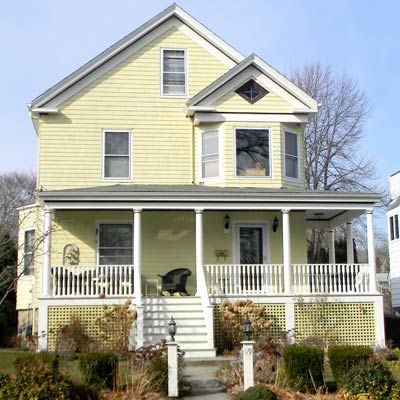
If you were Irish and landed in Newport in the 19th century, odds are you made your home in the Fifth Ward, on the city’s south side. Perhaps you helped build the nearby 21-acre Fort Adams or found employment along the waterfront at the Newport Gas-Light Company or, when Kingscote, Chateau-sur-Mer, and The Breakers were built, someone like you had to take care of those massive “summer cottages.” The tenacity with which the neighborhood has clung to its name over the years (it was absorbed by the Third Ward voting district in the 1950s) is indicative of the strong cultural spirit of the people who live here, and have for generations.
The Houses
“The Fifth Ward has examples of nearly everything Newport has to offer,” says Pieter Roos, executive director of the Newport Restoration Foundation. “You can find gems all over.” There are lots of simple one- and two-story frame houses with clapboard or shingle siding, some larger Second Empire multifamily houses, and a smattering of Queen Annes. Prices run between $250,000 and $550,000.
Why Buy Here?
There is a healthy supply of well-built houses in a family-oriented neighborhood close to the water and several parks. Downtown Newport, and all it has to offer, is within a 20-minute walk. Recently, a naval-base realignment brought new jobs to Newport and, with this, increased competition for these perfect starter homes, so don’t delay. “We’re still oversupplied,” says real estate broker Arthur Chapman, whose great-grandfather, P.J. Fagan, built many of the houses on Carroll Avenue in the heart of the Fifth Ward, “but the rush is on.”
Among the best for: The Northeast, Cottages and Bungalows, Family Friendly, Waterfront, First-Time Buyers, Parks and Recreation, Retirees, Walkability, Lots to Do, American Heritage
Central Gardens Memphis, Tennessee
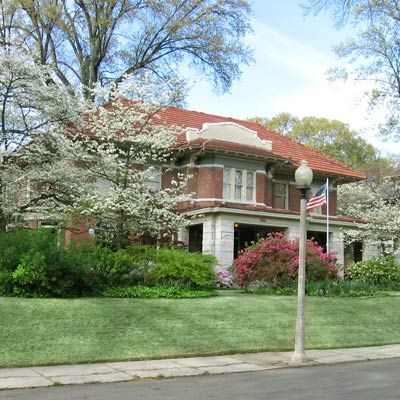
Once favored by wealthy turn-of-the-century Memphis residents who made their fortunes during the city’s cotton boom, this 83-block first-tier suburb is known for beautifully maintained houses distinguished by handsome millwork and wide front porches. And talk about tree-lined streets! With more than 90 different species of trees, most of which are more than a century old, the entire neighborhood was designated a Level 3 Arboretum through the Tennessee Arboretum Certification Program in 2008. Located just two miles from downtown Memphis, the backbone of Central Gardens is the Central Gardens Association, which has overseen the restoration and maintenance of the area since 1967.
The Houses
Central Gardens’ most lavish homes are former country estates built in the Tudor Revival, Neoclassical, and Mediterranean Revival styles. While these houses, often beautifully landscaped, command anywhere from $300,000 to more than $1 million, there are plenty of affordable American Foursquare and Craftsman homes (starting at around $150,000) to choose from. The entire neighborhood is on the National Register of Historic Places.
Why Buy Here?
Those who live here get to enjoy the ease of suburban living with the added benefit of being able to walk to dining and shopping. Central Gardens is a block or two from Overton Square, with its Italian restaurants and pizza parlors, as well as the Cooper-Young area, offering delis, more restaurants, and pubs.
Among the best for: The South, Family Friendly, Walkability, Cottages and Bungalows, City Living, Gardening, American Heritage
Gonzales, Texas
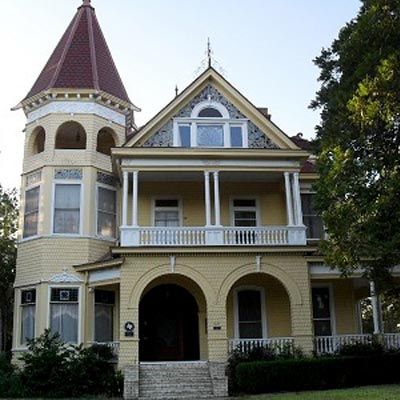
Local history buffs know Gonzales as “the Lexington of Texas,” where the battle for the Lone Star State’s independence got underway. It happened in 1835, when the settlement fought off a 100-man-strong Mexican army attempting to retrieve a cannon the Mexican government had given them to thwart Native American attacks. After a brief battle, the army left empty-handed—a failure that’s re-enacted each October during the town’s Come and Take It festival. But history isn’t all that this town of 7,000 is concerned about. Gonzales’s well-preserved downtown is popular for tourists, who love its bed-and-breakfasts, restaurants serving hearty local fare, and antiques shops. They also come to tour the Shiner Brewery, located in the nearby town of Shiner.
The Houses
Most were built near the turn of the century, when the city’s cotton and cattle industries were booming thanks to the railroad, which allowed easier transport. They include elegant examples of Queen Anne, Tudor Revival, and Italianate houses and cottages, as well as Greek Revivals. Prices start at $60,000 for fixer-uppers and top out around $575,000.
Why Buy Here?
In the last 10 years, Gonzales has welcomed residents from larger cities who are looking to live in a small town within driving distance of jobs in Austin or San Antonio, an hour away. Michelle London and her husband, Mark, relocated from Chicago to manage two bed-and-breakfasts and have no regrets. “We’re here less than a year, but we love it,” says Michelle. Gonzales is close to state parks, lakes, and several golf courses, making it attractive to retirees as well.
Among the best for: The South, Small Towns, American Heritage, Walkability, Cottages and Bungalows, Fixer-Uppers, Easy Commute, Retirees, Bargains, Lots to Do, Parks and Recreation
Center Street Historic District, Logan, Utah
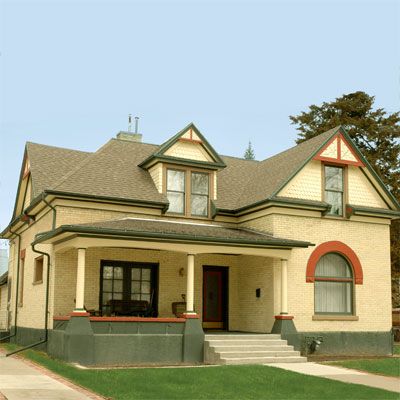
Surrounded by the cascading Bear River and the Wasatch mountains, the Center Street Historic District is a locally prized collection of houses dating back to the 1860s. It’s situated in the heart of Logan, Utah, a picturesque town near the Utah-Idaho border that was founded by Mormon settlers and is now home to Utah State University. The neighborhood is close to restaurants, shops, entertainment, and a farmer’s market, all within walking distance. Residents keep busy biking or hiking the local trails, swimming at the Aquatic Center, or hitting the links at the Logan River Golf Course, with its recently completed clubhouse.
The Houses
The majority of the houses were constructed in the late 1800s, when craftsmen who worked on the town’s tabernacle (begun in 1865) started building large brick and stone dwellings in the Queen Anne and Tudor Revival style for the city’s wealthy merchants. Later Arts and Crafts-influenced houses are also available. Prices range from $75,000 for a small fixer-upper to about $350,000 for a spacious, fully restored home.
Why Buy Here?
In addition to easy access to an active, healthy lifestyle, the Utah State Historic Preservation Office offers a 20 percent tax credit for rehabilitation of all properties listed on the National Register of Historic Places (including every structure in the Center Street District), an added incentive to fix up a house here. The city is also trying to expand the boundaries of the district so that more houses qualify for the credit.
Among the best for: The West, Bargains, Family Friendly, Walkability, Lots to Do, Parks and Recreation, American Heritage, Fixer-Uppers, College Towns, Victorians
Old Southwest, Roanoke, Virginia
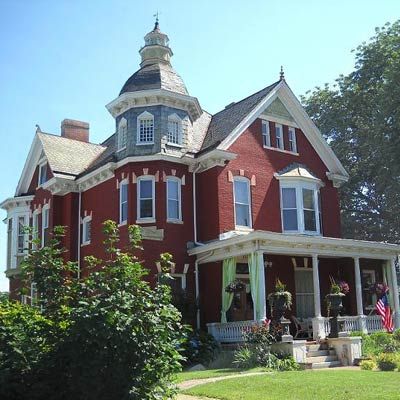
A 10-minute saunter from downtown Roanoke, Old Southwest was developed in the late 19th and early 20th centuries as a residential area for well-to-do merchants and those who profited from the many railroads that once intersected here. Until the end of World War II, it was considered one of the most fashionable neighborhoods in town, but after the war, many residents moved to embrace a new housing trend, the suburbs, leaving stately old houses to the mercy of developers, who chopped them into apartments or razed them. In recent years, as downtown Roanoke has been revitalized with facade improvements and new businesses so too has Old Southwest, which appeals to newcomers who appreciate well-crafted houses with expansive porches and classic columns.
The Houses
Most were constructed between the 1880s and the 1930s. Styles include fanciful Queen Annes, as well as Georgian Revivals, Gothic Revivals, and American Foursquares. Many retain their stained-glass windows and slate or metal roofs. Prices average $175,000, but expect to find some for as little as $10,000 or as much as $800,000, depending on size and condition. The neighborhood is listed on both the Virginia Landmarks Register and the National Register of Historic Places.
Why Buy Here?
The neighborhood was listed as a “Hot ‘Hood” by USA Today in 2010, thanks to its proximity to the city’s lively downtown. A neighborhood organization, Old Southwest Inc., hosts an annual Holiday Parlor Tour of Homes and other neighborhood events. Roanoke’s location in the Blue Ridge Mountains makes it a destination for outdoor enthusiasts too, and 32-acre Highland Park offers sports facilities and a dog park.
Among the best for: The South, Bargains, Victorians, Fixer-Uppers, First-Time Buyers, Walkability, Lots to Do, Parks and Recreation, Waterfront
East End, Charleston, West Virginia
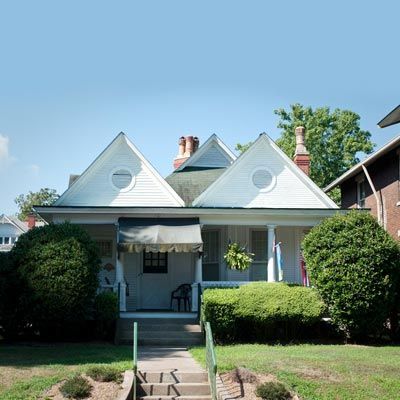
Straddling the confluence of the Kanawha and Elk Rivers, Charleston is the capital and center of commerce for West Virginia, but with just over 52,000 residents, it’s possible to find some small-town attributes. When history professor Billy Joe Peyton and his wife looked for a house in Charleston, it wasn’t hard to settle on the East End. “You can walk to nearly everything, and it’s an interesting place to live,” he says of the neighborhood that is home to a minor-league baseball stadium, the Clay Center for the Arts and Sciences, and the Capitol Market, a farmer’s market located inside a restored train depot.
The Houses
The official National Register Historic District, on the south side of Washington Street East, which runs through the middle of the East End, affords a mix of Queen Annes, foursquares, and Neoclassical Revivals, many with porticos and enormous stucco columns. Recently, a 1920 foursquare with original hardwood floors and a block from the river was for sale at $239,000. To the north, there are smaller brick and wood-frame houses that are deals, like a 1,700-square-foot 1910 Craftsman for just $38,000.
Why Buy Here?
After suffering from urban blight during the latter half of the 20th century, the neighborhood is experiencing a wave of revitalization and preservation. Thanks in part to the efforts of the East End Main Street program, many buildings have been refurbished, new street lamps installed, and colorful murals painted by local artists. What’s more, around 30 new businesses have opened since 2002. Even outside Charleston, people are taking notice: The neighborhood is a semifinalist for the 2012 Great American Main Street Award.
Among the best for: The South, Victorians, Walkability, First-Time Buyers, Fixer-Uppers, Lots to Do, Bargains, Cottages and Bungalows, City Living
Buffalo, Wyoming
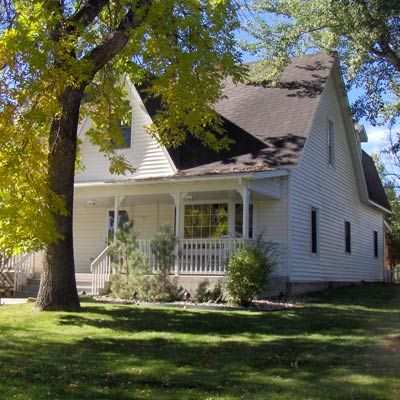
Buffalo was established in the 1870s to provide saloons, hotels, and dining for gold miners and for soldiers stationed at nearby Fort McKinney, where their assignment was to keep the peace among sparring Native American tribes. Today, the city of 4,500 is home to many outdoor enthusiasts who know a thing or two about self reliance. “It’s made up of a hearty, easy-going group,” says Johnnie Pond, manager of Buffalo’s Historic Mansion House Inn. “And the outdoors is important to every one of them.” In addition to being a destination for hiking, biking, fishing, and hunting, Buffalo is also considered the artistic hub of Johnson County, with century-old commercial buildings that house galleries and museums, as well as studios where potters, ironworkers, and wood carvers hone their respective skills.
The Houses
There are a variety of houses that date to the 1880s, when the town was founded. Most were built by doctors, lawyers, judges, and those who worked on the railroad, which arrived in the late 1800s. Prices range from $150,000 to $500,000, but you can also find a fixer-upper cottage for $110,000.
Why Buy Here?
With scenic views of the Big Horn Mountains from every point in Buffalo, this place is about as beautiful as it gets. The nearby Bighorn National Forest encompasses 387 miles of snowmobile trails, two downhill ski areas, and four cross-country ski trails. The economy here is stable, thanks to a growing methane gas industry.
Among the best for: The West, Parks and Recreation, American Heritage, Small Towns, Walkability, Fixer-Uppers, Cottages and Bungalows
H Street NE, Washington, District of Columbia
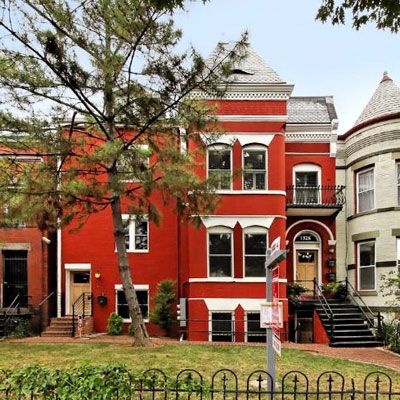
While it used to be one of D.C.’s most bustling commercial corridors, this historically African-American neighborhood, about a mile northeast of Union Station, was decimated during the 1968 riots following the assassination of Martin Luther King Jr. But after years of disinvestment, the renewed commitment to H Street is palpable as new business owners spruce up its formerly boarded-up storefronts, opening indie-music venues, bistros, and pubs serving boutique bourbons. Those trendy new businesses comingle with generations-old standbys, including Smokey’s Barbershop & Oldies, one of just a few H Street businesses to survive the riots. Despite all the changes, the place remains vibrant and diverse, says Realtor Alix Myerson. “You see well-cared-for houses that have been in the same family for generations, as well as places that have recently been redone.”
The Houses
The neighborhood is known for its two-story brick rowhouses in the Federal, Colonial Revival, and Queen Anne styles. Due to its growing popularity, home prices have nearly doubled in the past two years, now ranging from $300,000 to $800,000, depending on condition. That said, we recently found a 1905 Queen Anne rowhouse with original oak millwork for $299,000.
Why Buy Here?
H Street renewal is expected to continue, thanks to housing and commercial developments slated for the next few years. City leaders are optimistic that the completion of a new streetcar line, which will link H Street to downtown in 2013 will create even more interest. In 2006, a historic 1938 movie theater reopened as the Atlas Performing Arts Center, now a centerpiece of the neighborhood’s arts district.
Among the best for: The Northeast, City Living, Lots to Do, Fixer-Uppers, Easy Commute, Walkability, American Heritage
Olde Walkerville, Windsor, Ontario, Canada
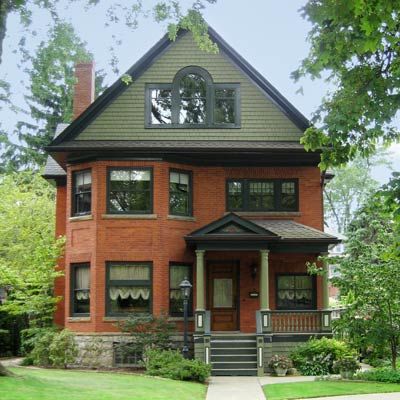
Olde Walkerville’s spirited beginnings date to the 1850s, when Hiram Walker established the Canadian Club whisky distillery on several hundred acres of land on the Canadian side of the Detroit River. To house his workers, Walker surrounded his distillery with a company town inspired by the British garden-city movement—with wide streets, open spaces, and bountiful vegetation. The town was self-sustaining, with its own post office, schools, and a church. These days, Olde Walkerville remains a close-knit community, where it’s not unusual to see neighbors helping one another with gardening projects. Walkerville’s retail thoroughfare, Wyandotte Street, is planted with cafes, shops, and restaurants. And you can still smell the sweet scent of Mr. Walker’s whisky in the air.
The Houses
Elegant houses of 3,500-plus square feet—built for company management—include Tudor Revivals, Edwardians, and Romanesque Revivals. More modest Arts and Crafts dwellings, constructed for Walker’s laborers, are equally well preserved. Blocks of seemingly uniform rowhouses and semidetached houses are set off by decorative brickwork, varying parapets, and front or end gables. Prices range from $150,000 to as much as a million.
Why Buy Here?
A 15-acre park surrounding Willistead Manor and a small but thriving business area three blocks south make the 20-minute walk to Windsor’s center almost unnecessary. And a revitalized commitment to self-sustainability and lots of green space assure that Olde Walkerville is a perfect place to enjoy nature’s splendor, minus the suburban chore of driving everywhere. “The homes don’t stay long on the market because there’s not many gems like Walkerville anymore,” says Chris Holt of the Walkerville Residents Association.
Among the best for: Canada, Family Friendly, Walkability, Gardening, Retirees, Lots to Do, Easy Commute
Annapolis Royal, Nova Scotia, Canada
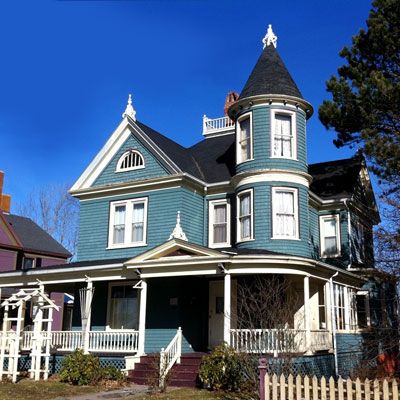
Located at the junction of the Annapolis and Allain Rivers, Annapolis Royal is a waterfront community of just under 500 residents, many of them artists, writers, or retirees. The town is proud to be one of North America’s oldest continuous European settlements. It was founded as a French colony in 1605 and eventually served as the capital of Acadia (later Nova Scotia) until 1710, when it became the capitol of British Nova Scotia. Later, the town became home to merchants, commercial fisherman, and sea captains who built elegant houses along St. George Street. Today, the waterfront is populated with shops and art galleries, as well as the Historic Gardens, a 17-acre horticultural wonderland that tells the story of Nova Scotia through the gardens and crops planted here over the centuries.
The Houses
While a few examples of late-18th-century architecture survive, most houses and commercial buildings here were built by late-19th- and early-20th-century residents who made their fortunes in commercial fishing and other seafaring industries. Styles include Queen Anne, Second Empire, Folk Victorian, Gothic Revival, and Georgian Revival. Prices range from about $115,000 to $400,000 USD.
Why Buy Here?
Because of its fine 18th-, 19th- and early-20th-century architecture, most of Annapolis Royal is listed as a Canadian National Historic District. While fishing is still big, its scenic beauty and small-town atmosphere make Annapolis Royal a draw for those who work from home, as well as retirees, who love the fact that shops, groceries, a theater, and a hospital are all within walking distance on St. George Street.
Among the best for: Canada, Waterfront, Retirees, Victorians, Walkability, Lots to Do, Gardening, Family Friendly
St. Martins, New Brunswick, Canada

Summer vacationers flock to this tiny village for its rugged beauty, and some love it so much they stay. “It’s a healthy place to be,” says Jacqueline Bartlett, who retired to St. Martins from Toronto with her husband in 2005. Locals don’t mind trading urban convenience for gorgeous views of the Bay of Fundy along the southern coast of the province, 110 miles from the Maine border. “We came for the good, fresh air and healthy water. I have my own chickens and food from the garden—and I’m a city person.” The remote town comes alive as a tourist mecca during the summer, but only about 400 of New Brunswick’s heartiest stick it out year-round. “Most go south for the winter,” says local museum curator Barbara McIntyre, with a friendly chuckle.
The Houses
Prosperous sea captains built most of the homes in the area in the early 19th century. Inspired by architecture from as far away as France, Spain, Malaysia, and China, the houses weave elements of what locals saw abroad with Gothic Revival, Italianate, and Queen Anne styles. Expect a bay view, an acre or more of land, and a sturdy, storied structure to set you back about $110,000 to $250,000.
Why Buy Here?
All roads to the entrance of the famed Fundy Trail Parkway lead through St. Martins. This 10-mile multiuse coastal trail is undergoing its second phase of development. Once completed, it will connect to the trans-Canadian network, creating hundreds of new year-round jobs in the area and also giving the town an even bigger tourism boost.
Among the best for: Canada, Small Towns, Waterfront, Parks and Recreation, Cottages and Bungalows, Bargains, Walkability, Victorians
Gravelbourg, Saskatchewan, Canada
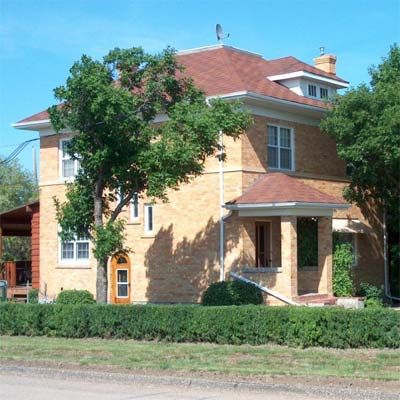
Celebrated for its preservation of Francophone traditions that stretch back to its 1906 founding by Roman Catholic priests, Gravelbourg is considered the “cultural gem of Saskatchewan.” A religious complex—comprising a cathedral, a bishop’s residence, and the Convent of Jesus and Mary—together with brick sidewalks and a growing business district on Main Street marry antiquity with modernity. Residents can grab lunch at contemporary bistro Cafe de Paris or dig around in Styles, a gardening and kitchen store. “You’re enjoying a small town, but you still have urban amenities,” said Carlene Wallington, the town’s Economic Development Officer. French and English immersion programs are available at every stage of education. College Mathieu offers secondary French education supported by Centre Culturel Maillard, which devotes itself to the preservation of French language and culture. The Summer Solstice Festival celebrates music, literature, and the performing arts.
The Houses
Gravelbourg’s early-20th-century homes are in the style of Early Classical Revival, Colonial Revival, and French Eclectic. The more modest heritage homes range from $80,000 to $100,000 USD, while Gravelbourg’s original pioneer homes sell for $200,000 and up.
Why Buy Here?
If the cultural offerings, northern lights, and prairie sunsets aren’t enough, the city of Moose Jaw, offering art galleries and the Temple Gardens Mineral Spa, and the U.S. border are an hour away. Nearby Thomson Lake Regional Park and Shamrock Park provide opportunities for camping, fishing, and golfing.
Among the best for: Canada, Bargains, Retirees, Walkability, Fixer-Uppers, Lots to Do, Parks and Recreation
The Highlands, Edmonton, Alberta, Canada
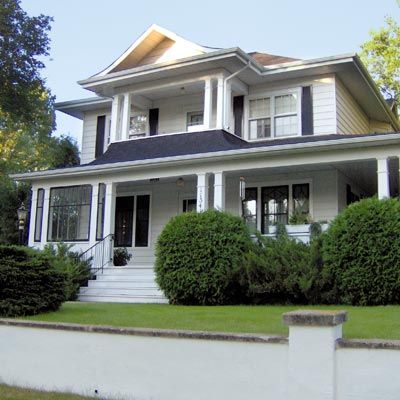
Named in a contest that awarded the winner $50 in gold, The Highlands was developed by the McGrath-Holgate Real Estate Company in 1910 as an “upper crust” community overlooking the North Saskatchewan River Valley on the northeast edge of Edmonton. The company’s rapid construction of luxurious houses came to an unfortunate end in 1913, when an economic recession caused the real-estate market here to bottom out. In the next 30 years, the Highlands developed piecemeal, with flurries of smaller houses built following World War I and again in the 1940s, following the expansion of oil pipelines from here to the United States. These days, residents enjoy an abundance of activities offered by the Highlands Community League, including sports programs, as well as bridge, gardening, and craft clubs.
The Houses
Houses in Craftsman, foursquare, and various Arts and Crafts styles can be had for $275,000 to $350,000. Classical Revival houses (as well as larger Craftsmans and foursquares) are priced in the millions.
Why Buy Here?
The multiphase development of The Highlands means the streets here are lined with dwellings representing a wealth of 20th-century housing styles. Says Johanne Yakula, of From Times Past Antiques and Interiors, “These homes are real pieces of history, standing side by side.” The upcoming conversion of writer and philosopher Marshall McLuhan’s childhood home into a visiting academics and writers’ center will add another landmark to what is already a culturally enriched community.
Among the best for: Canada, Cottages and Bungalows, Walkability, Gardening, Lots to Do